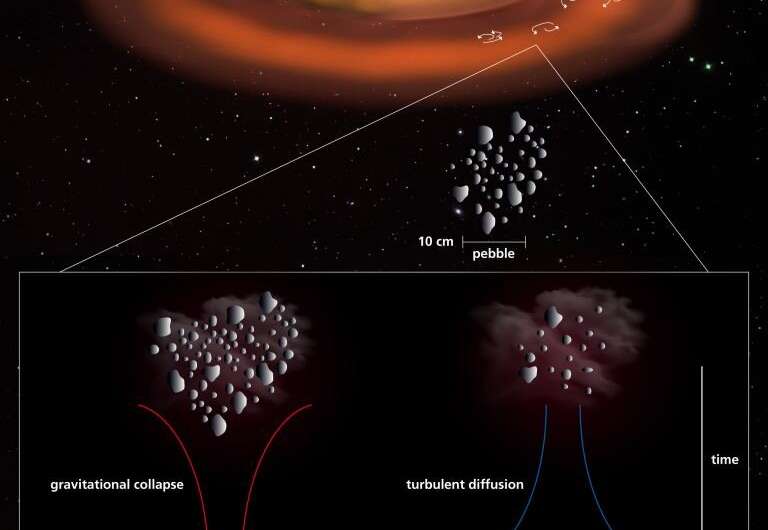It's thought that the smaller members of a family likely formed when the parent asteroid collided with another large asteroid. Because of this, you can make a family tree of asteroids, created by collisions in the early solar system. But when the team mapped out the family tree in 2017, they found 17 asteroids with no family. It seems these asteroids had never experienced a large collision. That's interesting, because it means they are still in the primordial state in which they formed.
What's more interesting is that these primordial asteroids tend to have a similar size. The sweet spot seems to be about 100 kilometers in diameter. Primordial asteroids are far more likely to be this size rather than smaller or larger. If asteroids grew gradually in the early solar system, you would expect to find a diverse range of sizes. So why are they almost all the same size?
The answer seems to be turbulence. Turbulence describes the chaotic motion of air that can make a plane trip rough, but turbulence is also seen in the swirl of smoke from a candle, or the ripples of water as flows over stones. In the early solar system, these turbulent swirls would tend to trap dust and rubble into a small region, giving the material time to collapse by gravitational attraction. The team's research shows that turbulent formation, rather than simple collisions, can explain the consistent size of primordial asteroids. Thus, early asteroids formed quickly, setting the stage for the formation of larger planetary bodies.
If this model is correct, it could explain why some asteroids are more like clumps of gravel than a solid body. It could also explain why early collisions between asteroids were so common.



